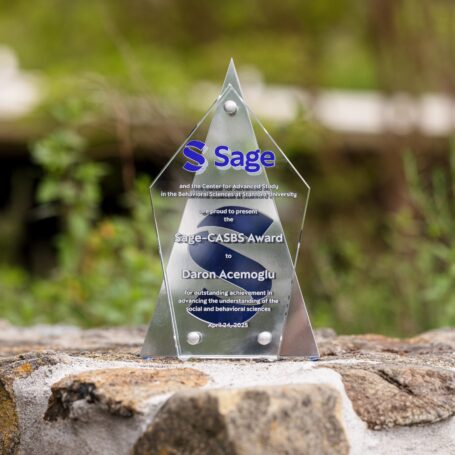An Invisible Bias with Real Implications for Women Leaders
The underrepresentation of women in senior leadership positions across all sectors is clearly not a pipeline issue. Research points to bias as one reason they aren’t getting ahead. Specifically, second-generation gender bias, which often goes unnoticed, and needs to be recognized and mitigated. Women will be better able to contribute to solving the most challenging problems facing our world today when their journeys to leadership are not impeded. Lisa DeFrank-Cole and Sherylle J. Tan provide solutions to combat gender bias and support women’s access to leadership.
Anika works as a certified public accountant (CPA) in the United States for a large multinational firm. She is in her mid-30s and married with a young child. To move up in the company, it is not uncommon for accountants in this firm to work as expatriates for a few years before returning to the U.S. Her senior manager, Mike, considers Anika to be an asset and he mentors her during their regular meetings. An opportunity for a CPA with Anika’s experience arises in the Kingdom of Bahrain with their member firm. Mike has placed two of his last five proteges in this rotating position and has seen them move up after serving in this role. Though Mike thinks very highly of Anika, he doesn’t want to put her in an awkward spot by suggesting that she move to Bahrain because she has a family. Without consulting Anika, he decides to nominate Peter instead of Anika because Peter doesn’t have children.
Research tells us that individuals who take on overseas leadership placements tend to have career advancement opportunities stemming from these stretch assignments (Shortland, 2021). The simple act of not considering a woman for an overseas appointment—rather than letting her decide—is a form of second-generation gender bias, which arises from “cultural assumptions and organizational structures, practices, and patterns of interaction that inadvertently benefit men while putting women at a disadvantage” according to Ibarra, Ely, & Kolb (2013, p. 6). Though it is embedded in organizations, it frequently goes unnamed and unrecognized by both women and men. The subtlety is what makes it different from first-generation gender bias, which was overt and explicit. Think about a woman being fired for becoming pregnant in the 1960s–it was undisguised and blatant. Second-generation gender bias, a form of implicit bias, is inconspicuous and reinforces the status quo, which favors men. It “impedes women’s journeys to leadership and hinders their leader identity development by preventing them from being seen as leaders and role models for other women” (DeFrank-Cole & Tan, 2022, p. 121).
The hypothetical case about Anika highlights the need for greater understanding of bias and how we can begin to ‘fix the system.’ Women have the requisite skills and have outpaced men in education, earning about 60 percent of all college degrees (Catalyst, 2020). Prior to the pandemic, nearly half of all management positions were held by women (Catalyst, 2020). However, there are fewer women who work as senior leaders in all sectors (DeFrank-Cole & Tan, 2022), so it’s not the case that there aren’t enough women to do the jobs. Here are four examples of the types of barriers that women face (Diehl & Dzubinski, 2017; Ibarra, Ely, & Kolb, 2013; Williams & Dempsey, 2014):
- A lack of role models for women: Women have fewer opportunities to see someone who looks like them in the senior ranks and to emulate. In every sector (private, public, and social), men dominate senior leadership positions. Anika’s manager did not have examples of women taking on international assignments, which kept him from considering her for the role.
- Gendered career paths and gendered work: Gendered career paths encompass male dominated professions (e.g., computer engineering, architecture, surgery) and gendered work includes office housework as well as domestic responsibilities. In Anika’s case, Mike isn’t accustomed to seeing women CPAs work internationally when they have children.
- Women’s lack of access to networks and sponsors: There are fewer sponsors for women than there are for men and women’s networks are different from men’s (Ibarra, 2019). Anika’s manager did not act as a sponsor in this case. Instead of advocating for Anika, he didn’t consider her for the opportunity.
- Double binds: Women leaders often find themselves walking a tightrope between being seen as overly feminine, which makes them seem likeable but not as competent, or overly masculine, which makes them seem competent but not well liked. Yet, in order to get ahead, women need to be both competent and likeable. What would Mike say if Anika questioned his decision to send Peter to Bahrain, rather than her? She may be competent, but questioning her mentor may make her unlikeable.
How to Combat Gender Bias and Support Women’s Access to Leadership
Below are three ways to mitigate bias and create opportunities for more women to be successful in senior leadership positions (Ibarra, Ely, & Kolb, 2013).

Educate everyone about second-generation gender bias: Most people don’t realize they are experiencing gender discrimination and actually deny it. Cultures and practices inadvertently favor men and they can have negative impacts on women and other genders. To combat discrimination, we need to educate everyone and speak up when bias takes place. Building awareness of the subtle, invisible biases will help people recognize when women and men are being held to different standards.
Create Safe ‘Identity Workspaces:’ Women need safe ‘identity workspaces’ or a group that provides an opportunity to learn about, discuss, and try out different leadership approaches. Research shows that women are able to better develop their leadership capacities when doing so in same-gender environments, such as women’s leadership programs (Kassotakis, 2017). Organizations can create a safe setting through a coaching relationship, a women’s leadership development program, and through the support of peers. Organizations should help women establish these safe spaces so they can compare notes and help each other thrive.
Anchor in Leadership Purpose: Anchoring our leadership approach in purpose enables women to focus more on what they are doing—their goals—rather than defining themselves in relation to gender stereotypes. Women can be proactive in developing larger networks and other activities that could help them in their careers. For example, when women socialize to expand their networks, they may find these activities to be inauthentic—that they would be ‘using’ other people as a means to an end. Instead, if women think of the socializing and expansion of networks connected to a larger purpose, such as the benefit they could provide other people through their business, they may be more inclined to participate in networking. We know that bias is pervasive and is preventing women from moving into senior leader positions. The solutions provided are ways to reduce the barriers created by second-generation gender bias and support gender equity in leadership.
More about the Business Research into Practice Blog Series
The LSE Business Review and Business & Management INK are both committed to the exchange of knowledge and driven by the belief that social and behavioral science has the power to improve society. With this shared purpose, our new, co-branded blog series, Business Research into Practice, will focus on current examples of business and management ideas, theories, and research being turned into real-world practice.
Each month we’ll be sharing new posts written by a global mix of policymakers, practitioners, and academics who stand at the intersection of academia and business and are experts in their field. If you have ideas for topics, or a post that you would like to write yourself, please send an email to Business & Management INK at bmink@sagepub.com.




































































































